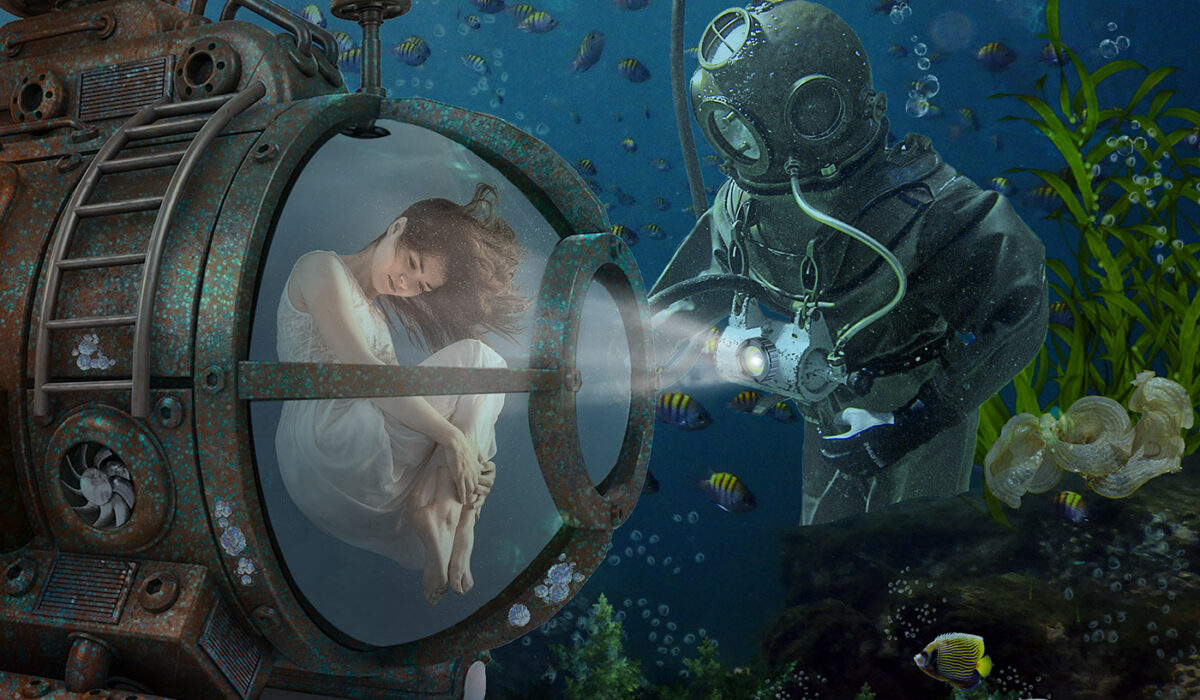— The featured artist of the 93rd issue of Living the Photo Artistic Life magazine is AWAKE artist Linda Lewis. It’s a privilege to be able to interview Linda here on Quill and Camera . . .
Q: I understand your art background is extensive?
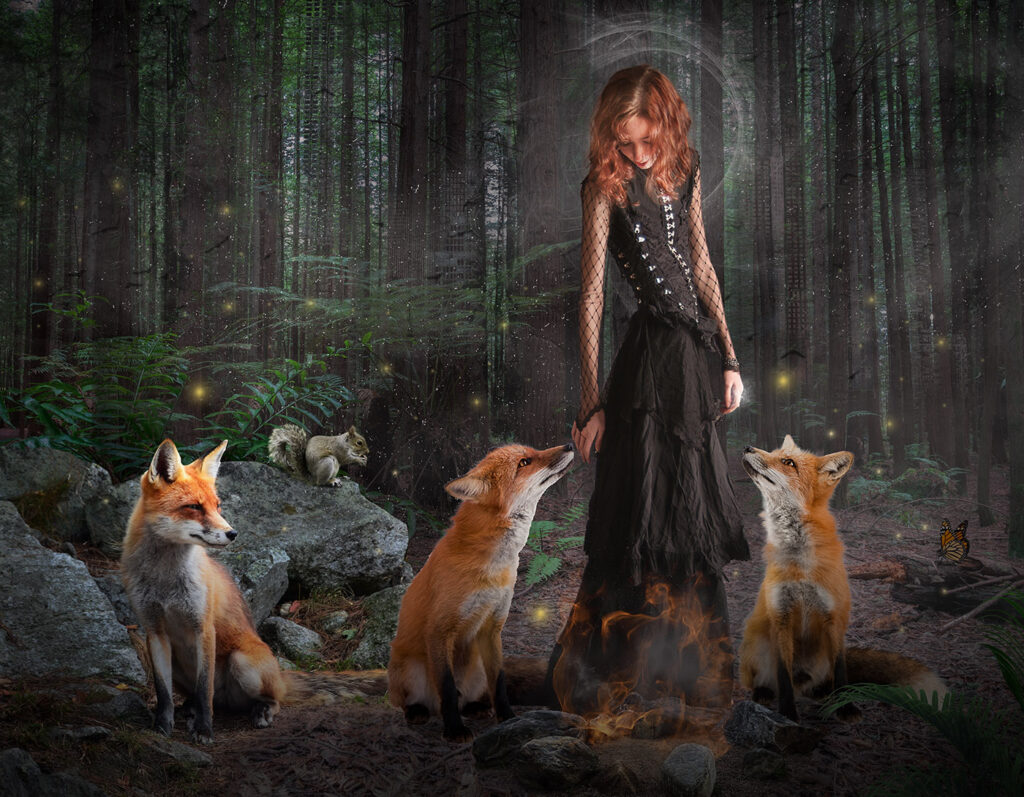
I suppose it is. While studying for a graduate degree in the social sciences, I began taking art classes. Upon completion of that degree, I applied to a graduate program in fine arts. During my program, I received a Fulbright scholarship to study at the Danish Design School in Copenhagen, Denmark. After I returned from Denmark, I received the graduate school’s highest award, the Nathan Cummings Foundation Summer Travel Fellowship. That summer, I immersed myself in the arts of Romania, Croatia, and Turkey. In 1997, I received a Master of Fine Arts degree in fiber arts from Arizona State University. My thesis exhibition was composed of 2-D and 3-D artworks created from books. After completing my degree, I developed an extensive exhibition record that included national and international exhibitions. After 2005, I gradually switched to creating digital artwork.
Q: What was it that got you started in digital photo artistry?
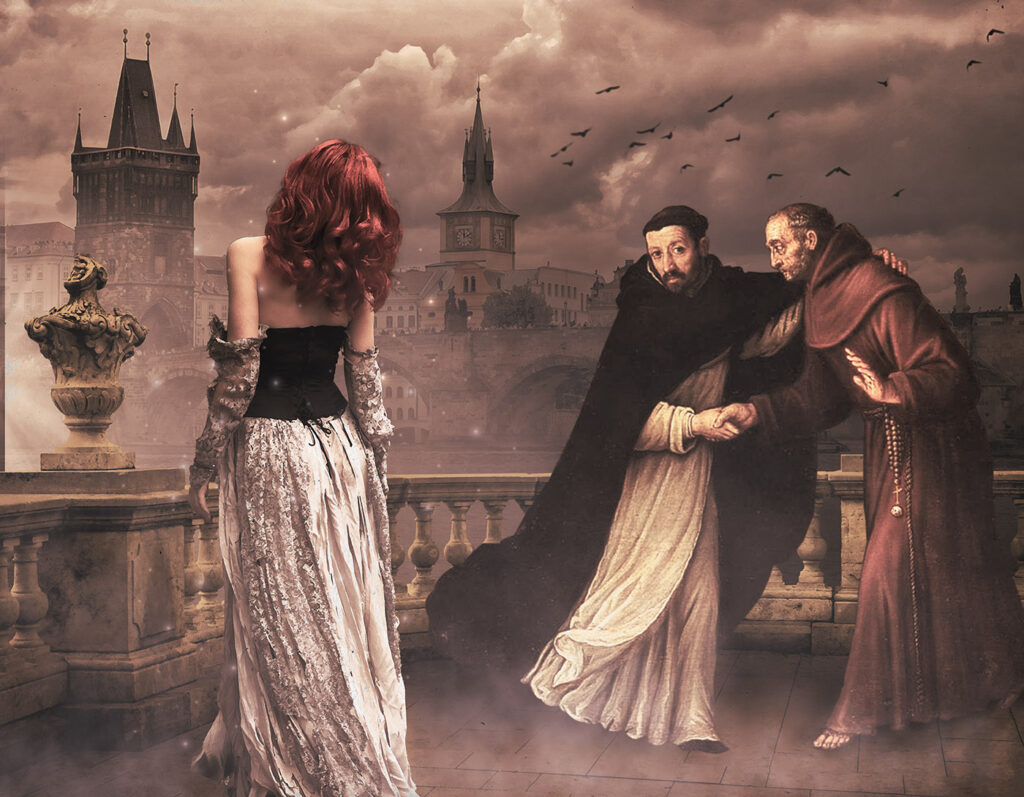
Photoshop was introduced in 1990, the year I started my art studies. The aura of excitement generated by this product ultimately seduced me into buying it a few years later. Initially, I viewed it as another tool to create fiber art. I imported text and images for printing on fabric or paper. I made a few attempts to learn more about the software, but I didn’t have the wherewithal to make much progress. As they say, good things come to those who wait, because, eventually, people started making tutorials that I could understand and utilize to create art. Photoshop suits my personality and my current circumstances. I love the immediacy of it, and If I don’t like my creation — presto chango, I can take it in another direction. This contrasts sharply with the labor required to create fiber art.
Q: What inspires your work?
I have never suffered from a dearth of ideas. All I have to do is pick up a newspaper. The one constant in my artwork has been my desire to critique the world we live in. This bent is largely due to my education in sociology and women’s studies. After achieving my graduate degree in sociology, I realized that I preferred to represent my ideas visually rather than support them academically. Beyond that, I’d say Joseph Campbell’s work on mythology and religion has informed much of my digital art.
Q: Can you describe your creative process?
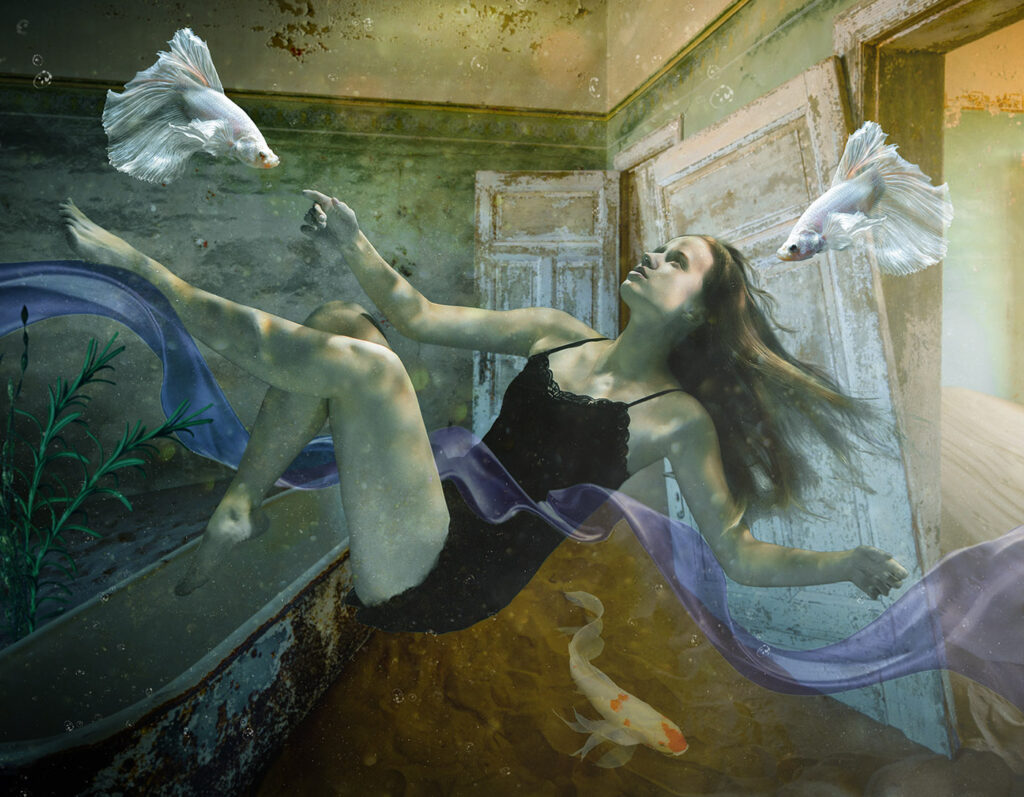
I think about my creative process as a series of problems to solve. My first step is to identify an image or two that spark my interest. A concept usually starts to form during this process. Then, I look for more supporting images. Once I have a rough composition, there is the problem of applying the elements of art (line, shape, value, texture, and color) and principles of organization (harmony and variety). This is the part of the process I love most. I often allow the work to marinate for several days while I think about solving problems. A technique I use is to muse about specific issues as I drift off to sleep at night. I usually have results in the morning.
Q: What is your advice for aspiring artists?
First, I suggest that you acquire a book on the “fundamentals of art” and study it. Second, I would say that new technologies have always informed artistic practice. They hold the possibility of astonishing us in unexpected ways and revealing our world in a fresh light.
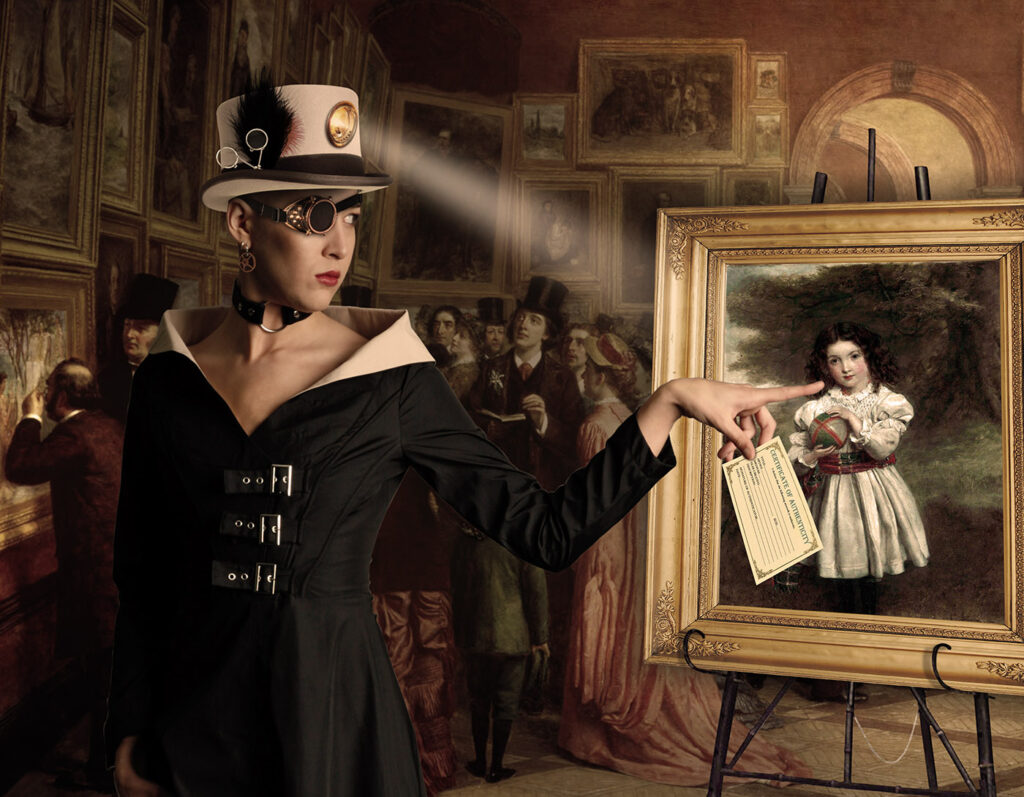
It is not enough that we are solely impressed by the spectacle of a new medium. Our challenge, as artists, is to push the boundaries of visual art. We can only do this by knowing the history of art. Ultimately, we must create art that seamlessly integrates technique, concept, and the aesthetic.
In my case, I began by enjoying the art that others created. It has been my great privilege to visit museums and galleries in over fifty countries.
I guess you could say that art is my life.
The primary influence, for my becoming an artist, was the Women’s Art History course I took at Appalachian State University. I believed the myths that you had to be born with talent, had to use traditional mediums (i.e., painting, sculpture in stone, etc.) and preferably had to be a man. The course introduced me to feminist women artists like Magdalena Abakanowicz, Judy Chicago, and Miriam Schapiro. They used traditional craft materials to create contemporary art. I tested the waters by learning the traditional craft techniques of Appalachia like loom weaving and basket weaving. Eventually, I developed the confidence to call myself an artist.
Needless to say, education had a profound impact on my ability to live an artistic life.
Q: What’s your next step as an artist?
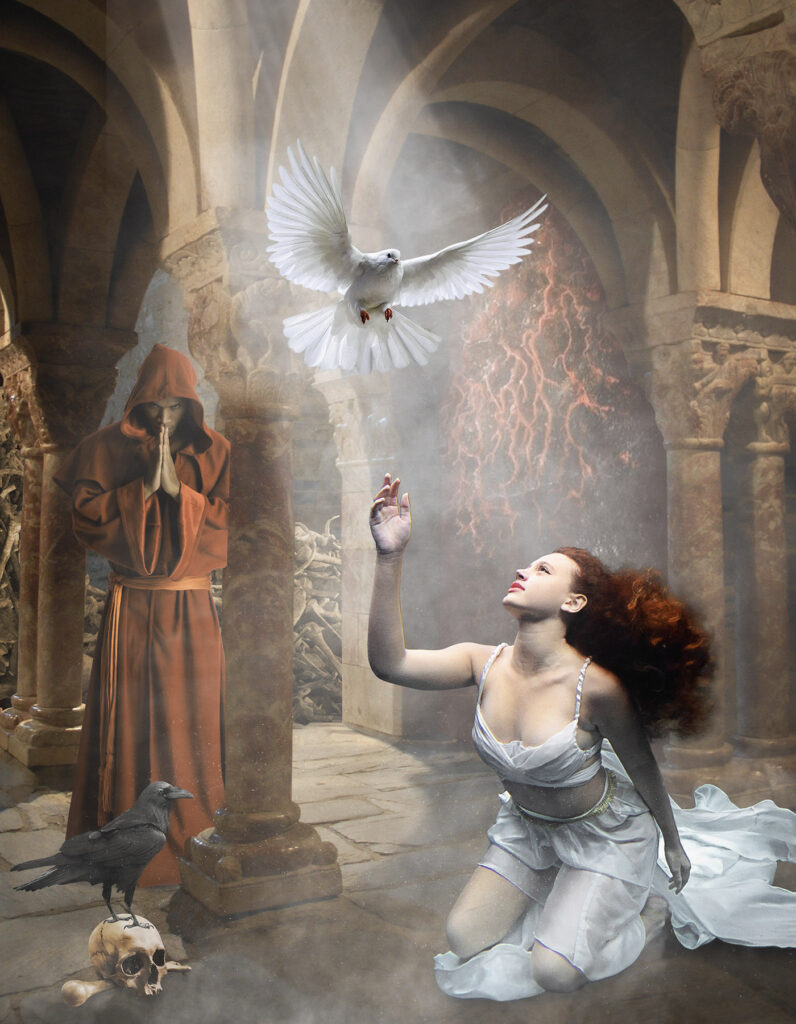
Here’s a joke I’ve often made about myself: “If I don’t come away from someone’s exhibition feeling green with envy, then I haven’t enjoyed it.” I’ve only received confused expressions when I’ve said that out loud. (Maybe they weren’t artists!) But put another way, it’s like thinking, “I wish I could do that,” or “I wish I had thought of that.” I believe that’s a valuable way to think and feel if you’re an artist.
In my early 20s, I spent a lot of time at the Dallas Museum of Art looking at modern and contemporary art. I loved it all — from post-impressionism to minimalism. It made my heart a lovely shade of green. So, I think my next step should be to spend some time revisiting that artwork and analyzing why the artwork spoke to me and how I could use that same language in my own artwork.

